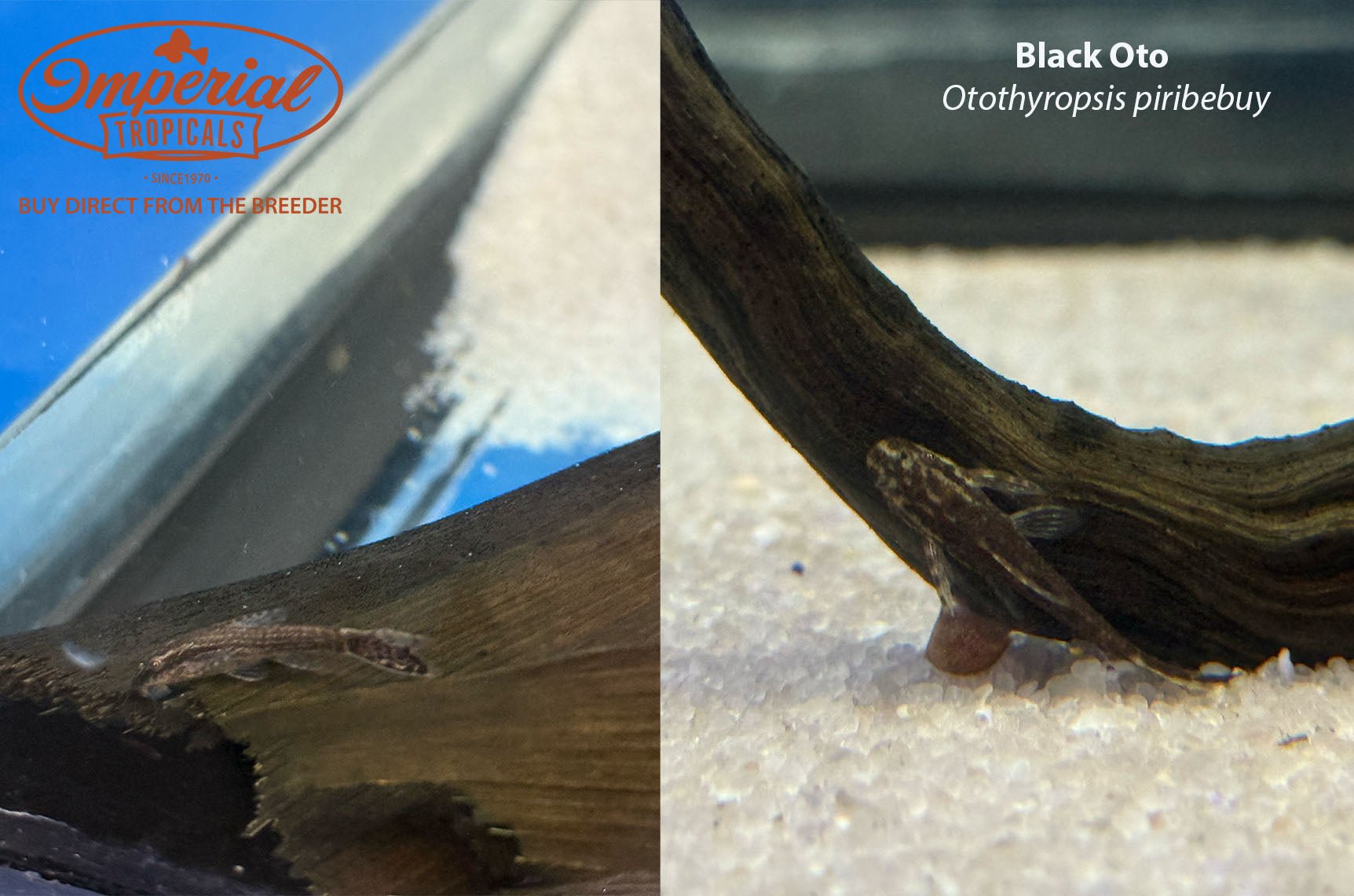
Remarks: The black oto is a tiny catfish native to the Rio Piribebuy from which it gets the second part of its scientific name (Otothyropsis piribebuy). They bear a number of resemblances to the popular common oto both in structure, behavior, and care, but they are not even in the same genus. Like the common oto, the black oto is a very small, peaceful fish that rarely exceeds an inch in length and lives in groups of hundreds in the wild. Like all otos, they have a flat belly and a sucker-like mouth to help them stick to surfaces where they graze on biofilm and algae. They differ from common otos in that they have a more stream-lined body, a less flattened head, smaller eyes, and a different color pattern. The black oto, true to its name, is sometimes totally black or at least dark gray or brown but it can sometimes present a mottled pattern
As this species is very social, in captivity they should never be kept in groups smaller than at least 6-8 to help them feel secure. Providing plenty of hiding spaces such as with live plants and driftwood will further encourage them to explore their surroundings. Black otos do not have too many defenses and are rather timid so aggressive tankmates or those large enough to swallow them should be avoided. They also require high levels of dissolved oxygen and do not tolerate poor water quality so heavy filtration and frequent water changes are a must. If a tank has high flow, it can be very entertaining to watch them play in the current.
Like most species of oto catfish, black otos make great fish for algae management, but what comes with their amazing ability to clean up algae is a very high metabolism requiring that they be able to graze 24/7. For this reason, they should not be added to a tank that does not yet have algae present and should be fed many frequent, small meals. Vegetables such as zucchini and green beans can be an excellent treat to ensure these little catfish remain happy and healthy.
